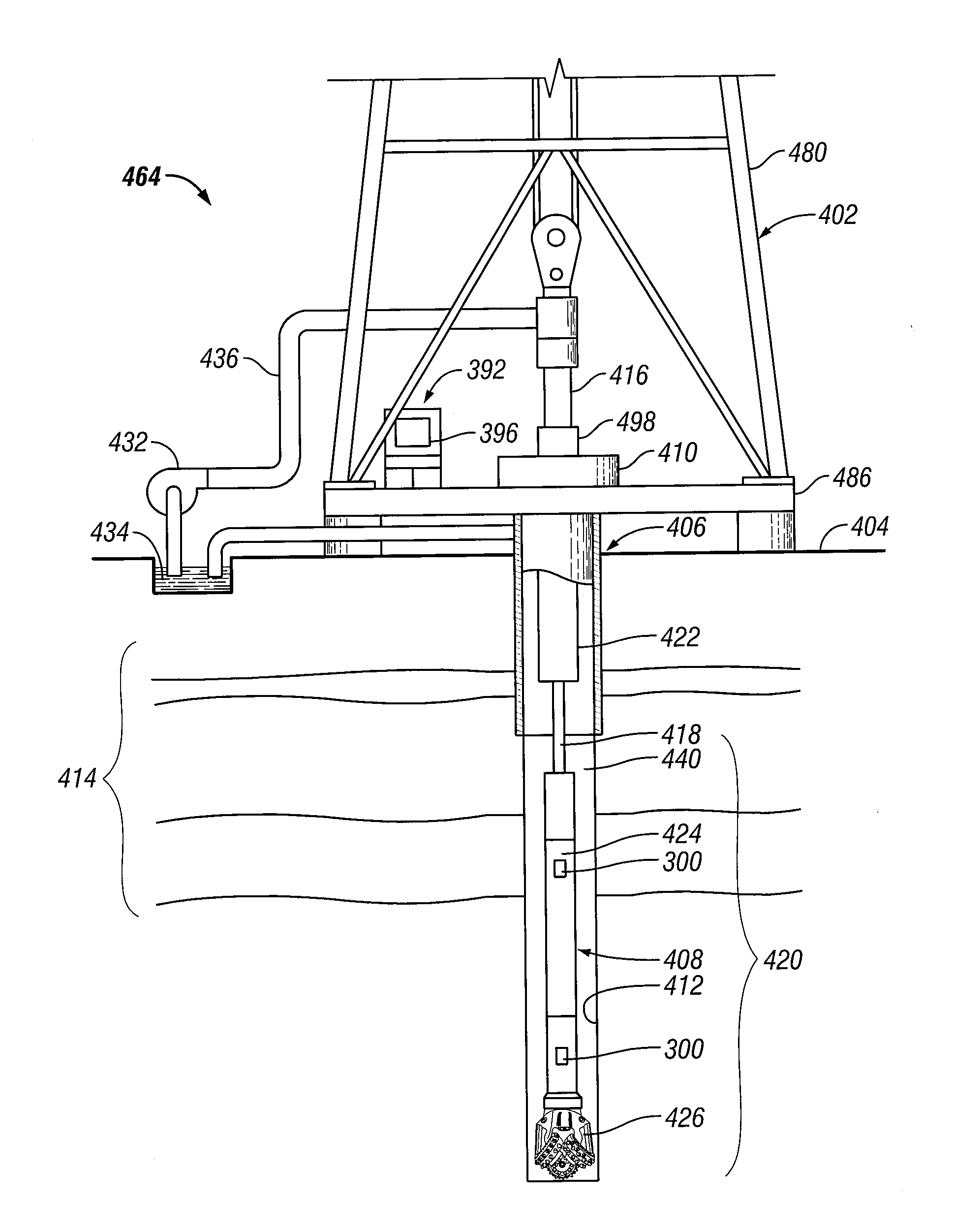Fracture characterization by interferometric drillbit imaging, time reversal imaging of fractures using drill bit seismics, and monitoring of fracture generation via time reversed acoustics and electroseismics
a technology of interferometric drillbit and seismic imaging, which is applied in the direction of seismology for waterlogging, using reradiation, instruments, etc., can solve the problems of not investigating the use of seismoelectrically generated electromagnetic radiation created by the fracturing process to separately, and the spectral content of signals provided by the drill bit source is more limited
- Summary
- Abstract
- Description
- Claims
- Application Information
AI Technical Summary
Benefits of technology
Problems solved by technology
Method used
Image
Examples
Embodiment Construction
[0013]In certain embodiments, apparatus, systems, and methods operate to locate preexisting fractures by irradiating them with elastic energy generated by a drill bit or controlled sources on the drill string, causing the fractures to act as a secondary source of elastic and electromagnetic energy that radiates back into the subsurface, where it may be detected by appropriate sensors. In some embodiments, apparatus, systems, and methods operate to locate fractures as they are generated, whether spontaneously during the drilling process, for example, or as a result of a commercial fraccing operation. In many embodiments, elastic, magnetic, and / or electric field emissions resulting from fracture initiation or irradiation are monitored using appropriate sensors. In many of these embodiments, time-reversal signal processing is used to closely determine the location of the fractures within the formation. In this way, not only the location of the fractures, but the extent of the formation...
PUM
 Login to View More
Login to View More Abstract
Description
Claims
Application Information
 Login to View More
Login to View More - R&D
- Intellectual Property
- Life Sciences
- Materials
- Tech Scout
- Unparalleled Data Quality
- Higher Quality Content
- 60% Fewer Hallucinations
Browse by: Latest US Patents, China's latest patents, Technical Efficacy Thesaurus, Application Domain, Technology Topic, Popular Technical Reports.
© 2025 PatSnap. All rights reserved.Legal|Privacy policy|Modern Slavery Act Transparency Statement|Sitemap|About US| Contact US: help@patsnap.com



